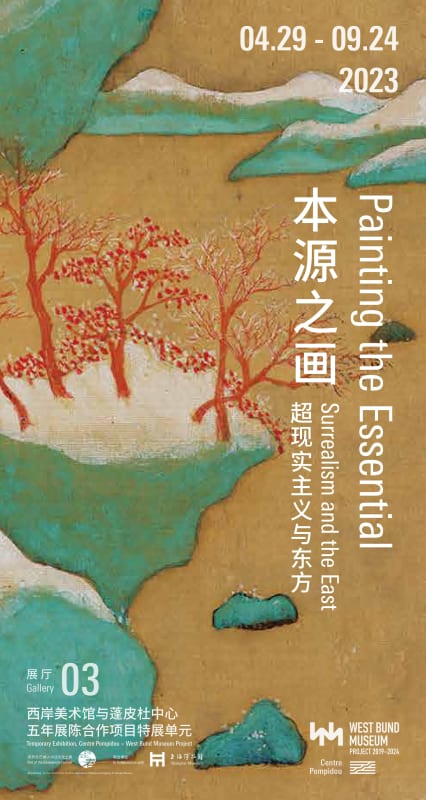As direct witnesses of World War I, seeking a spiritual alternative and challenging the values of the West, seemingly incapable of averting its own destruction, Surrealist poets and painters very soon turned their gaze toward East. There they discovered a world where painting and poetry were inseparable. The painter André Masson thus observed: “it’s a way of existing - in the deepest sense - and not, as with us, a way of doing. A vital decision for the Asian, an aesthetic attitude for the European.”
Rarely has any Western pictorial movement, as much as Surrealism, established the framework for a veritable aesthetic dialogue between East and West.
The French poet André Breton published the Surrealist Manifesto in Paris in 1924. Accompanied by Louis Aragon, Paul Éluard, Robert Desnos, Philippe Soupault and Antonin Artaud, he founded a decidedly new literary and artistic movement, free from the control of reason, which spread very widely in Europe and then throughout the world, and petered out in the 1960s after an exceptionally long life.
Commenting on his first automatic drawings, the artist wrote: “We know how much writing in China and Japan is associated with the practice of great painting. There is no example – it is inconceivable - of an eminent painter who is not also a great calligrapher. [...] What is admirable about Chinese ideography is that it is pictorial.”
The East and its calligraphy provided a model of the union, of the fusion between painting and poetry that Joan Miró sought in his paintings. “I make no difference between painting and poetry. I sometimes illustrate my canvases with poetic phrases, and vice versa. Did not the Chinese, those great lords of the mind, proceed in the same manner?”
